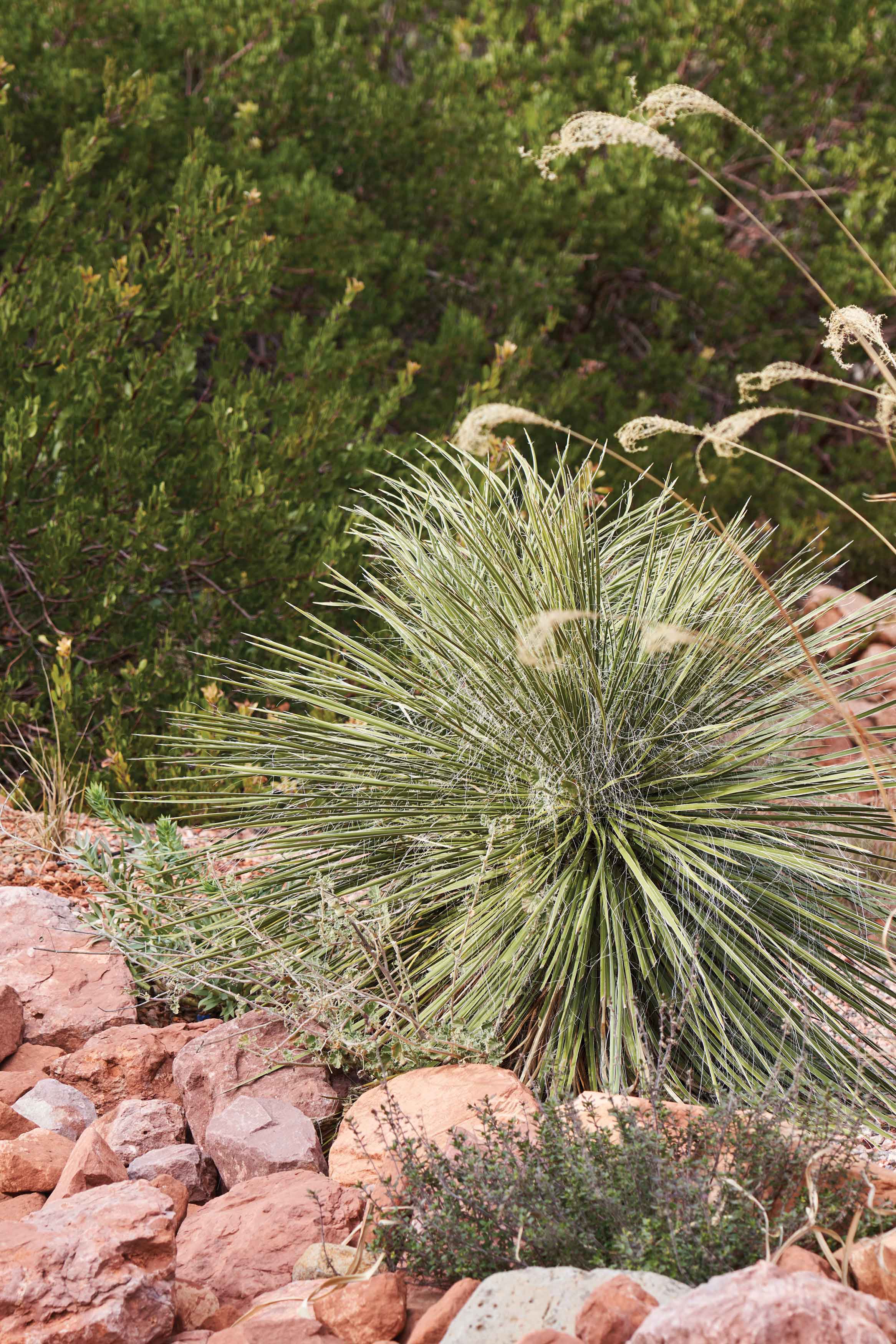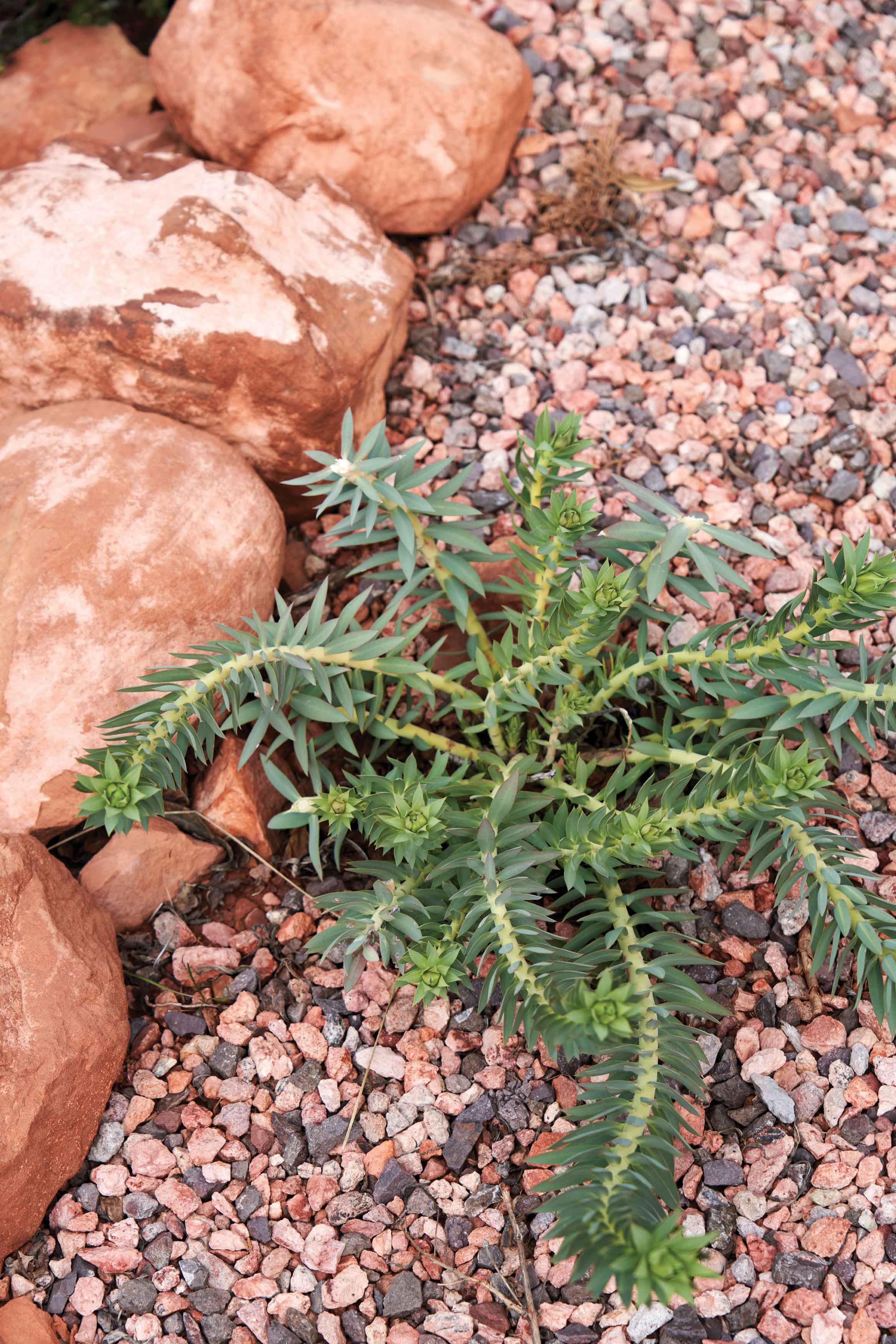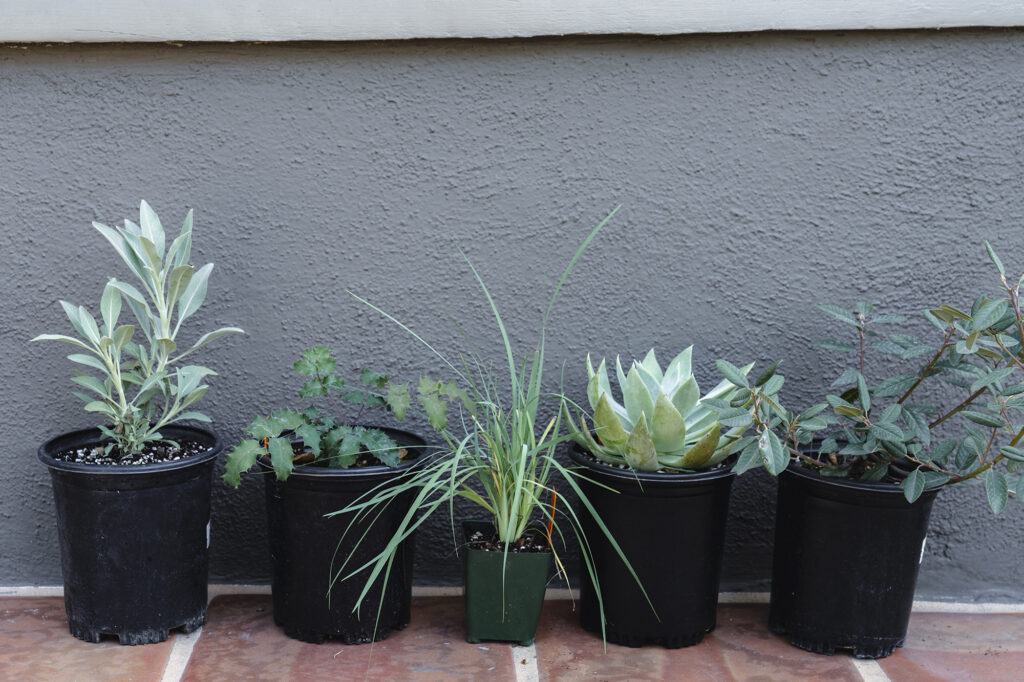August is a pause button, not a stop sign. While it’s still too hot to put natives in the ground, this month is a pivotal planning period. With temperatures soaring across the West, your gardening to-do list should shift from planting to prepping. Here are smart ways to support your existing native plants, set the stage for fall, and make the most of the dog days of summer.
Thomas J. Story
1. Deep Watering Is the Real Summer Glow-Up
You don’t need to flood your garden. In fact, overwatering in August can do more harm than good—especially for drought-tolerant native plants that are used to coasting through summer dry spells. But even the toughest sages and buckwheats appreciate a well-timed soak when the heat turns relentless. Leaves curling or dropping? Your plant might be thirsty or trying to conserve energy. Check the soil before reaching for the hose.
Try this: Water early in the morning, and focus on deep, infrequent watering—think once every 7 to 10 days for established natives. Skip the daily sprinkles and aim for a long, slow soak that reaches the root zone. A good rule of thumb: Water until the top 6 inches of soil are moist, then step away.

Thomas J. Story
2. Mulch Isn’t Just for Looks
Think of mulch as a sunhat for your soil. It keeps roots cool, reduces water loss, and blocks out pesky weeds trying to take hold while your natives are napping. Plus, it makes your garden look beautifully buttoned up—like it knows what it’s doing.
Try this: Shredded bark, wood chips, and even leaf litter from your own yard. Go 2–4 inches thick, and keep mulch a few inches away from the base of each plant to avoid rot.

Thomas J. Story
3. Kick out Invasives While Natives Rest
Your native garden might be slowing down, but invasives? They’re just getting started. August is a sneaky window where things like Bermuda grass, bindweed, and yellow star-thistle try to steal water, sunlight, and nutrients from the plants you actually want.
Try this: Patrol your garden with a sharp eye and a hori hori in hand. Pull up anything that doesn’t belong—just be careful not to disturb too much soil, which can wake up dormant weed seeds.
4. Start Soil Prep
Planting time may still feel far away, but mid to late summer is when serious gardeners start prepping the ground for future glory. Removing turf? Expanding a habitat zone? Now’s your moment to embrace the heat and make it work in your favor.
Try this:
- Sheet mulch: Layer cardboard over grass or weedy areas, top with compost and mulch, and let it break down naturally. By October, you’ll have plant-ready soil without back-breaking labor.
- Solarize: Got a patch full of stubborn seeds or fungal issues? Cover it with clear plastic for 4–6 weeks and let the sun work its magic.
- Aerate compacted zones: Loosen the top layer with a digging fork to increase water absorption and root movement.

Thomas J. Story
5. Design with Purpose
Before you start panic-buying in September, take a breath. August is your design month. It’s when you walk your neighborhood for inspiration, take notes on what’s thriving (and what’s not), and sketch out your dream habitat. Use native plant databases like CalScape.org or your local chapter of the Native Plant Society to filter by region, soil type, and sun exposure.
Try this:
- Canopy: Native oaks, redbuds, or manzanita
- Mid-layer: Toyon, coffeeberry, or wild lilac
- Groundcovers: Yarrow, creeping sage, and native strawberry
- Pollinator magnets: California fuchsia, goldenrod, milkweed

Thomas J. Story
6. Keep Wildlife Hydrated and Happy
Your plants aren’t the only ones struggling through triple digits. Birds, bees, and beneficial bugs are all part of the habitat you’re tending—and they need a little extra TLC right now.
Try this:
- Clean and refill birdbaths daily (dirty water spreads disease).
- Add shallow dishes with pebbles for bees and butterflies.
- Don’t deadhead all your flowers—leave some seed heads for goldfinches and sparrows.

Thomas J. Story
7. Propagate with Cuttings
Want to expand your garden without spending a dime? Native plants like white sage, toyon, and coyote brush can be propagated from softwood or semi-hardwood cuttings. Warm air + not-too-cold nights = fast root development.
Try this: Snip healthy stems (no flowers), strip the lower leaves, dip in rooting hormone (optional), and plant in a moist, well-draining potting mix. Keep them shaded and misted until rooted.
8. Give Your Irrigation a Check-Up
Drip lines cracked? Emitters clogged? Timers acting weird? Do not wait until September to find out your system’s busted.
Try this:
- Turn everything on and walk your lines.
- Look for leaks, clogs, or overwatering zones.
- Clean filters, adjust flow rates, and set up zones based on plant groupings.

Thomas J. Story
9. Let Dormant Natives Do Their Thing
Not all brown plants are dead. Many native species go semi-dormant in the summer, conserving energy until cooler, wetter days return. They’re just napping. Resist the urge to rip them out—they’ll bounce back.
Don’t worry if:
- Your blue-eyed grass has disappeared.
- Your Clarkia has gone crispy.
- Your yarrow looks like it gave up.
10. Get Ready for Late Summer and Fall Plant Sales
Native plant sales start popping up in late September and run through November. If you’ve been eyeing that elusive milkweed or a perfectly pruned Arctostaphylos, now’s the time to plan your haul.
Your checklist:
- Join your local native plant society for early access.
- Make a wishlist based on your sun, soil, and zone.
- Map your planting spots and prep your soil.



